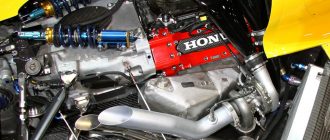What is Engine Capacity of a Car?
Engine capacity, also known as engine displacement or engine size, refers to the volume of the combustion chambers in an internal combustion engine. It is typically measured in cubic centimeters (cc) or liters (L). The engine capacity is an important factor that determines the power output, torque, and fuel efficiency of a vehicle.
How is Engine Capacity Measured?
Engine capacity is measured by multiplying the area of the piston by the distance it travels within the cylinder. The area of the piston is determined by its diameter, while the distance it travels is known as the stroke. The total volume of all the cylinders in the engine is then calculated to determine the overall engine capacity.
Units of Engine Capacity
Engine capacity is commonly expressed in either cubic centimeters (cc) or liters (L). One liter is equal to 1000 cubic centimeters. In the United States, engine capacity is often referred to in cubic inches (cu in). One cubic inch is approximately equal to 16.387 cubic centimeters or 0.016387 liters.
Significance of Engine Capacity
Engine capacity has a significant impact on several aspects of a vehicle’s performance and efficiency:
- Power Output: Larger engine capacities generally produce more power. This is because a larger engine can accommodate more air-fuel mixture, which results in a more powerful explosion and greater force on the pistons.
- Torque: Engine capacity also influences torque, which is the twisting force produced by the engine. Higher engine capacities typically generate higher torque, providing better acceleration and pulling power at lower speeds.
- Fuel Efficiency: Larger engine capacities often consume more fuel than smaller engines. This is because larger engines require more air-fuel mixture to generate power, resulting in higher fuel consumption.
Factors Affecting Engine Capacity
Several factors can influence the engine capacity of a vehicle, including:
- Number of Cylinders: Engines with more cylinders typically have larger capacities.
- Bore and Stroke: The bore refers to the diameter of the cylinder, while the stroke refers to the distance the piston travels within the cylinder. Larger bore and stroke dimensions contribute to increased engine capacity.
- Cylinder Head Design: The design of the cylinder head can also affect engine capacity by influencing the combustion chamber volume.
Common Engine Capacities
Common engine capacities for passenger vehicles range from 1.0 liter to 6.0 liters or more. Smaller engines (1.0-2.5 liters) are often found in compact cars and fuel-efficient vehicles, while larger engines (3.0-6.0 liters) are typically used in performance cars and heavy-duty vehicles.
Conclusion
Engine capacity is a crucial factor that influences the performance and efficiency of a car. It is important to consider the specific needs and requirements when choosing a vehicle’s engine capacity. Smaller engines offer better fuel efficiency, while larger engines provide more power and torque. Understanding engine capacity can help consumers make informed decisions about the type of vehicle that best suits their driving style and preferences.




